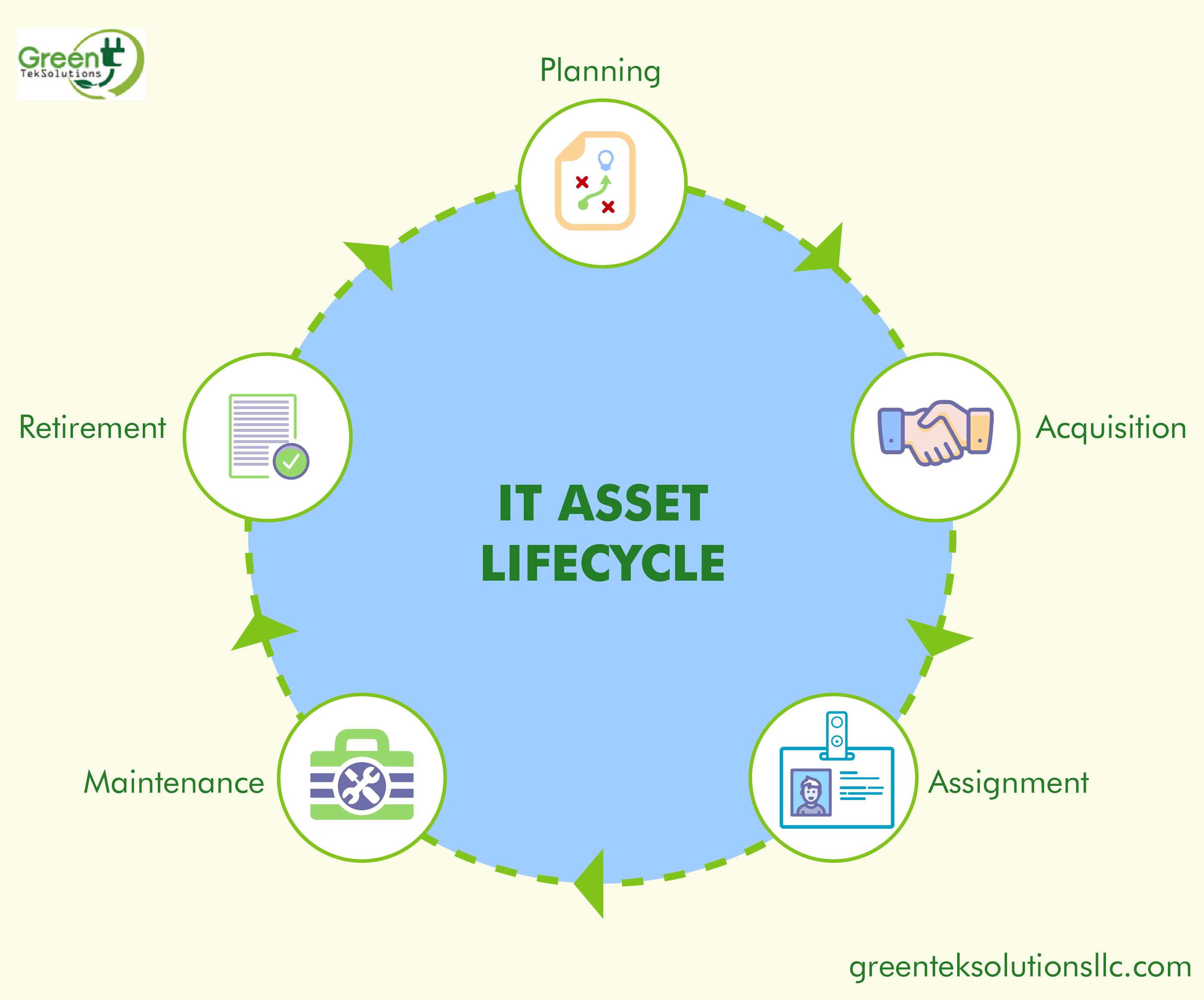Assets are those things that have a finite lifespan. To maximize the value generated for the company, asset management processes employ the concept of asset life cycle to structure activities and support decision making.
Regardless of the type of asset, if it refers to buildings, equipment or software, etc. the inherent cycle is the same.
Asset management is the systematic process of developing, operating, maintaining, updating and disposing of assets in an economic manner.
In the context of IT asset management, the structure of an asset's life cycle is generally as follows:

Planning
The strategy and decisions about which assets are needed within the organization, how to obtain them, how they will be used and how they will be financed. Planning usually includes Total cost of ownership (TCO) and cost analysis / benefit analysis of the alternatives.
Acquisition
The procurement of assets through their construction, purchase, lease or obtaining legal licenses.
Assignment
The introduction of the asset in the IT ecosystem, includes installation, integration with other components, establishment of operation / support processes, and provision of access to users.
Maintenance
As assets are operated and used, maintenance, repair, upgrades and overhauls may be necessary to maximize value for users, extend asset life, mitigate risks and reduce support costs.Retirement
At the end of the useful life of the asset, it must be disposed of or disposed of in any other way. The withdrawal usually includes making the transition from users to other resources, updating the asset records, canceling support agreements, finalizing license renewals and initiating the planning of spare assets.
Everyone must deal with change, and everyone has a different perspective about what change management is.
By better understanding the similarities and differences, you will be better prepared to select the best change management infrastructure and change management software that best suits the needs of your company.

